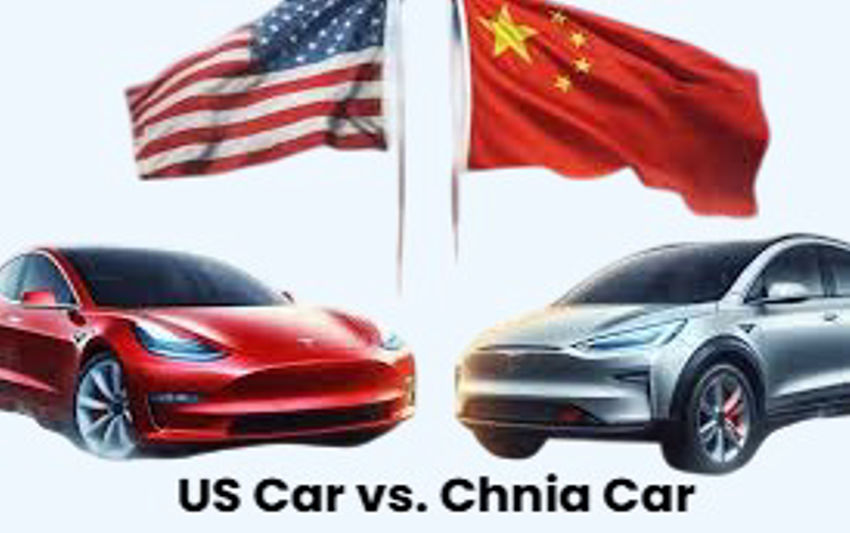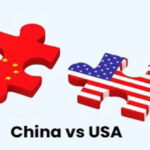The global automobile business is changing dramatically as a result of smart technology, autonomous driving, and electric vehicles (EVs).China and the United States are two of the biggest players in this sector, but their approaches, strengths, and challenges differ significantly. While US automakers like **Tesla, Ford, and General Motors (GM)** lead in innovation and brand recognition, Chinese companies such as **BYD, NIO, and Geely** are rapidly expanding with aggressive government support and cost advantages.
This article compares Chinese and US automobile companies in terms of **market dominance, technology, EV adoption, global expansion, and future prospects**.
1. Market Share and Domestic Dominance
Chinese Automakers
– **Largest automotive market in the world** – China sells more cars annually than the US and Europe combined.
– **BYD is the global EV leader** – Surpassed Tesla in Q4 2023 in pure EV sales.
– **Government-backed growth** – Policies like subsidies, tax breaks, and infrastructure support (charging stations) boost domestic EV adoption.
– **Strong local dominance** – Foreign brands (VW, Toyota) must partner with Chinese firms to compete.
US Automakers
– **Tesla dominates the premium EV market** – Still leads globally in brand value and innovation.
– **Legacy automakers (Ford, GM) transitioning to EVs** – Investing billions but lagging behind Chinese rivals in affordability.
– **Strong pickup truck & SUV market** – Gas-powered vehicles still dominate US sales.
– **Less government intervention** – US relies more on private investment than state subsidies.
**Verdict:** China leads in **total vehicle sales and EV adoption**, while the US excels in **high-end EVs and brand prestige**.
2. Electric Vehicle (EV) Technology & Innovation
China’s Strengths
– **Battery technology leadership** – CATL (Contemporary Amperex Technology) is the world’s largest EV battery producer.
– **Affordable EVs** – BYD’s Seagull starts at **$10,000**, undercutting US rivals.
– **Smart car integration** – Chinese EVs feature AI voice assistants, self-parking, and advanced infotainment.
China has **8.5 million** charging stations, compared to approximately 180,000 in the United States.
US Strengths
– **Tesla’s Full Self-Driving (FSD) & Supercharger network** – Still the gold standard for autonomous tech.
– **Legacy automakers catching up** – GM’s Ultium platform and Ford’s Mustang Mach-E show promise.
– **Higher performance EVs** – Tesla’s Cybertruck and Lucid Air lead in speed and range.
**Verdict:** China leads in **battery production and affordability**, while the US leads in **autonomous driving and luxury EVs**.
3. Global Expansion & Competition
China’s Global Push
– **BYD expanding in Europe, Southeast Asia, and Latin America** – Already outselling Tesla in some markets.
– **Tariff challenges in the US & EU** – Chinese EVs face restrictions over **subsidy concerns**.
– **Geely’s acquisitions (Volvo, Lotus, Polestar)** – Leveraging Western brands for global reach.
US Global Presence
– **Tesla’s factories in Germany, China, and Texas** – A truly global EV giant.
Once leading, Ford and GM are now losing market share to indigenous brands in China.
**US taxes on Chinese EVs** – restricting competition while protecting domestic automakers.
**Verdict:** China is **aggressively expanding worldwide**, while US automakers face challenges in maintaining dominance.
4. Challenges Facing Both Sides
China’s Challenges
– **Overcapacity concerns** – Producing more cars than domestic demand requires.
– **US/EU trade barriers** – Tariffs and restrictions limit growth in Western markets.
– **Brand perception** – Still seen as “cheap” compared to Tesla and German luxury cars.
US Challenges
– **High EV prices** – Average US EV costs **~$55,000**, limiting mass adoption.
– **Slow transition from gas cars** – Dealers and consumers resist full EV shift.
– **Battery dependency on China** – Most critical minerals processed in China.
5. Future Outlook: Who Will Dominate?
With the help of government assistance and cost advantages, **China** is on track to become the **largest auto exporter in the world**.
– **The US** will remain a leader in **high-tech, performance EVs** but must address affordability.
– **The big battle** will be in **Europe and emerging markets**, where Chinese brands are gaining ground.
China’s automobile industry is **winning on scale, affordability, and battery tech**, while the US maintains an edge in **innovation, software, and brand power**. The future may see:
– **More US-China partnerships** (e.g., Ford using CATL batteries).
– **Increased protectionism** (tariffs, local production requirements).
– **A split market** – China dominating budget EVs, US leading in premium/luxury.


